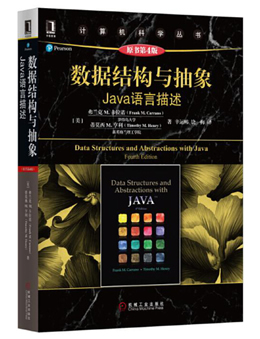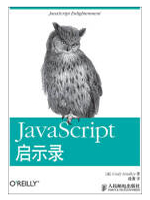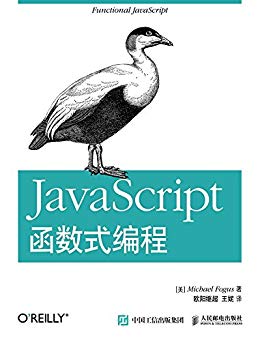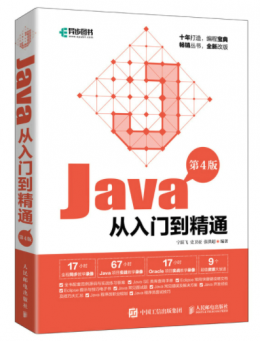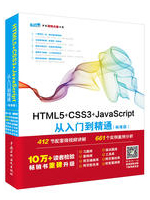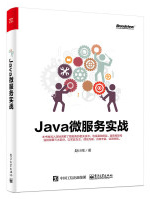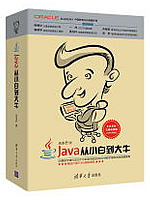为找教程的网友们整理了Java相关的编程文章,网友党彤彤根据主题投稿了本篇教程内容,涉及到java、invokedynamic、Java中invokedynamic字节码指令问题相关内容,已被151网友关注,下面的电子资料对本篇知识点有更加详尽的解释。
Java中invokedynamic字节码指令问题
1. 方法引用和invokedynamic
invokedynamic是jvm指令集里面最复杂的一条。本文将从高观点的角度下分析invokedynamic指令是如何实现方法引用(Method reference)的。
具体言之,有这样一个方法引用:
interface Encode {
void encode(Derive person);
}
class Base {
public void encrypt() {
System.out.println("Base::speak");
}
}
class Derive extends Base {
@Override
public void encrypt() {
System.out.println("Derive::speak");
}
}
public class MethodReference {
public static void main(String[] args) {
Encode encode = Base::encrypt;
System.out.println(encode);
}
}
使用javap -verbose MethodReference.class查看对应字节码:
// 常量池 Constant pool: #1 = Methodref #6.#22 // java/lang/Object."<init>":()V #2 = InvokeDynamic #0:#27 // #0:encode:()LEncode; #3 = Fieldref #28.#29 // java/lang/System.out:Ljava/io/PrintStream; #4 = Methodref #30.#31 // java/io/PrintStream.println:(Ljava/lang/Object;)V #5 = Class #32 // MethodReference #6 = Class #33 // java/lang/Object #7 = Utf8 <init> #8 = Utf8 ()V #9 = Utf8 Code #10 = Utf8 LineNumberTable #11 = Utf8 LocalVariableTable #12 = Utf8 this #13 = Utf8 LMethodReference; #14 = Utf8 main #15 = Utf8 ([Ljava/lang/String;)V #16 = Utf8 args #17 = Utf8 [Ljava/lang/String; #18 = Utf8 encode #19 = Utf8 LEncode; #20 = Utf8 SourceFile #21 = Utf8 MethodReference.java #22 = NameAndType #7:#8 // "<init>":()V #23 = Utf8 BootstrapMethods #24 = MethodHandle #6:#34 // invokestatic java/lang/invoke/LambdaMetafactory.metafactory:(Ljava/lang/invoke/MethodHandles$Lookup;L java/lang/String;Ljava/lang/invoke/MethodType;Ljava/lang/invoke/MethodType;Ljava/lang/invoke/MethodHandle;Ljava/lang/invoke/MethodType;)Ljava/lang /invoke/CallSite; #25 = MethodType #35 // (LDerive;)V #26 = MethodHandle #5:#36 // invokevirtual Base.encrypt:()V #27 = NameAndType #18:#37 // encode:()LEncode; #28 = Class #38 // java/lang/System #29 = NameAndType #39:#40 // out:Ljava/io/PrintStream; #30 = Class #41 // java/io/PrintStream #31 = NameAndType #42:#43 // println:(Ljava/lang/Object;)V #32 = Utf8 MethodReference #33 = Utf8 java/lang/Object #34 = Methodref #44.#45 // java/lang/invoke/LambdaMetafactory.metafactory:(Ljava/lang/invoke/MethodHandles$Lookup;Ljava/lang/Str ing;Ljava/lang/invoke/MethodType;Ljava/lang/invoke/MethodType;Ljava/lang/invoke/MethodHandle;Ljava/lang/invoke/MethodType;)Ljava/lang/invoke/CallS ite; #35 = Utf8 (LDerive;)V #36 = Methodref #46.#47 // Base.encrypt:()V #37 = Utf8 ()LEncode; #38 = Utf8 java/lang/System #39 = Utf8 out #40 = Utf8 Ljava/io/PrintStream; #41 = Utf8 java/io/PrintStream #42 = Utf8 println #43 = Utf8 (Ljava/lang/Object;)V #44 = Class #48 // java/lang/invoke/LambdaMetafactory #45 = NameAndType #49:#53 // metafactory:(Ljava/lang/invoke/MethodHandles$Lookup;Ljava/lang/String;Ljava/lang/invoke/MethodType;Lj ava/lang/invoke/MethodType;Ljava/lang/invoke/MethodHandle;Ljava/lang/invoke/MethodType;)Ljava/lang/invoke/CallSite; #46 = Class #54 // Base #47 = NameAndType #55:#8 // encrypt:()V #48 = Utf8 java/lang/invoke/LambdaMetafactory #49 = Utf8 metafactory // 字节码指令 public static void main(java.lang.String[]); 0: invokedynamic #2, 0 // InvokeDynamic #0:encode:()LEncode; 5: astore_1 6: getstatic #3 // Field java/lang/System.out:Ljava/io/PrintStream; 9: aload_1 10: invokevirtual #4 // Method java/io/PrintStream.println:(Ljava/lang/Object;)V 13: return // 属性 SourceFile: "MethodReference.java" InnerClasses: public static final #51= #50 of #56; //Lookup=class java/lang/invoke/MethodHandles$Lookup of class java/lang/invoke/MethodHandles BootstrapMethods: 0: #24 invokestatic java/lang/invoke/LambdaMetafactory.metafactory:(Ljava/lang/invoke/MethodHandles$Lookup;Ljava/lang/String;Ljava/lang/invoke/MethodType;Ljava/lang/invoke/Method Type;Ljava/lang/invoke/MethodHandle;Ljava/lang/invoke/MethodType;)Ljava/lang/invoke/CallSite; Method arguments: #25 (LDerive;)V #26 invokevirtual Base.encrypt:()V #25 (LDerive;)V
使用invokedynamic指令生成encode对象,然后存入局部变量槽#1。接着获取getstatic获取java/lang/System类的out字段,最后局部变量槽#1作为参数压栈,invokevirtual虚函数调用System.out的println方法。
那么invokedynamic到底是怎么生成encode对象的呢?
1.虚拟机解析
hotspot对invokedynamic指令的解释如下:
CASE(_invokedynamic): {
u4 index = Bytes::get_native_u4(pc+1);
ConstantPoolCacheEntry* cache = cp->constant_pool()->invokedynamic_cp_cache_entry_at(index);
// We are resolved if the resolved_references field contains a non-null object (CallSite, etc.)
// This kind of CP cache entry does not need to match the flags byte, because
// there is a 1-1 relation between bytecode type and CP entry type.
if (! cache->is_resolved((Bytecodes::Code) opcode)) {
CALL_VM(InterpreterRuntime::resolve_from_cache(THREAD, (Bytecodes::Code)opcode),
handle_exception);
cache = cp->constant_pool()->invokedynamic_cp_cache_entry_at(index);
}
Method* method = cache->f1_as_method();
if (VerifyOops) method->verify();
if (cache->has_appendix()) {
ConstantPool* constants = METHOD->constants();
SET_STACK_OBJECT(cache->appendix_if_resolved(constants), 0);
MORE_STACK(1);
}
istate->set_msg(call_method);
istate->set_callee(method);
istate->set_callee_entry_point(method->from_interpreted_entry());
istate->set_bcp_advance(5);
// Invokedynamic has got a call counter, just like an invokestatic -> increment!
BI_PROFILE_UPDATE_CALL();
UPDATE_PC_AND_RETURN(0); // I'll be back...
}
使用invokedynamic_cp_cache_entry_at获取常量池对象,然后检查是否已经解析过,如果没有就解析反之复用,然后设置方法字节码,留待后面解释执行。那么,重点是这个解析。我们对照着jvm spec来看。
根据jvm文档的描述,invokedynamic的操作数(operand)指向常量池一个动态调用点描述符(dynamic call site specifier)。
动态调用点描述符是一个CONSTANT_InvokeDynamic_info结构体:
CONSTANT_InvokeDynamic_info {
u1 tag;
u2 bootstrap_method_attr_index;
u2 name_and_type_index;
}
•tag 表示这个结构体的常量,不用管
•bootstrap_method_attr_index 启动方法数组
•name_and_type_index 一个名字+类型的描述字段,就像这样Object p放到虚拟机里面表示是Ljava/lang/Object; p
然后启动方法数组结构是这样:
BootstrapMethods_attribute {
...
u2 num_bootstrap_methods;
{
u2 bootstrap_method_ref;
u2 num_bootstrap_arguments;
u2 bootstrap_arguments[num_boot]
} bootstrap_methods[num_bootstrap_methods];
}
就是一个数组,每个元素是{指向MethodHandle的索引,启动方法参数个数,启动方法参数}
MethodlHandle是个非常重要的结构,指导了虚拟机对于这个启动方法的解析,先关注一下这个结构:
CONSTANT_MethodHandle_info {
u1 tag;//表示该结构体的常量tag,可以忽略
u1 reference_kind;
u2 reference_index;
}
•reference_kind是[1,9]的数,它表示这个method handle的类型,这个字段和字节码的行为有关。
•reference_index 根据reference_kind会指向常量池的不同类型,具体来说 ◦reference_kind==1,3,4 指向CONSTANT_Fieldref_info结构,表示一个类的字段
◦reference_kind==5,8,指向CONSTANT_Methodref_info,表示一个类的方法
◦reference_kind==6,7, 同上,只是兼具接口的方法或者类的方法的可能。
◦reference_kind==9,指向CONSTATN_InterfaceMethodref_info,表示一个接口方法
通过invokedynamic,我们可以得
1.名字+描述符的表示(由name_and_type_index给出)
2.一个启动方法数组(由bootstrap_method_attr_index给出)
2.手动解析
可以手动模拟一下解析,看看最后得到的数据是什么样的。在这个例子中:
0: invokedynamic #2, 0 //第二个operand总是0
查看常量池#2项:
#2 = InvokeDynamic #0:#27 // #0:encode:()LEncode; #27 = NameAndType #18:#37 // encode:()LEncode; BootstrapMethods: 0: #24 invokestatic java/lang/invoke/LambdaMetafactory.metafactory:(Ljava/lang/invoke/MethodHandles$Lookup;Ljava/lang/String;Ljava/lang/invoke/MethodType;Ljava/lang/invoke/Method Type;Ljava/lang/invoke/MethodHandle;Ljava/lang/invoke/MethodType;)Ljava/lang/invoke/CallSite; Method arguments: #25 (LDerive;)V #26 invokevirtual Base.encrypt:()V #25 (LDerive;)V
得到的名字+描述符是:Encode.encode(),启动方法数组有一个元素,回忆下之前说的,这个元素构成如下:
{指向MethodHandle的索引,启动方法参数个数,启动方法参数}
这里得到的MethodHandle表示的是LambdaMetafactory.metafactory:
#24 invokestatic java/lang/invoke/LambdaMetafactory.metafactory:(Ljava/lang/invoke/MethodHandles$Lookup;Ljava/lang/String;Ljava/lang/invoke/MethodType;Ljava/lang/invoke/Method Type;Ljava/lang/invoke/MethodHandle;Ljava/lang/invoke/MethodType;)Ljava/lang/invoke/CallSite;`
启动方法参数有:
•#25 (LDerive;)V
•#26 invokevirtual Base.encrypt:()V
•#25 (LDerive;)V
3. java.lang.invoke.LambdaMetafactory
先说说LambdaMetafactory有什么用。javadoc给出的解释是:
Facilitates the creation of simple "function objects" that implement one or more interfaces by delegation to a provided MethodHandle, after appropriate type adaptation and partial evaluation of arguments. Typically used as a bootstrap method for invokedynamic call sites, to support the lambda expression and method reference expression features of the Java Programming Language.
When the target of the CallSite returned from this method is invoked, the resulting function objects are instances of a class which implements the interface named by the return type of invokedType, declares a method with the name given by invokedName and the signature given by samMethodType. It may also override additional methods from Object.
LambdaMetafactory方便我们创建简单的"函数对象",这些函数对象通过代理MethodHandle实现了一些接口。
当这个函数返回的CallSite被调用的时候,会产生一个类的实例,该类还实现了一些方法,具体由参数给出
将上面得到的MethodHandle写得更可读就是调用的这个方法:
public static CallSite LambdaMetafactory.metafactory(MethodHandles.Lookup caller,
String invokedName,
MethodType invokedType,
MethodType samMethodType,
MethodHandle implMethod,
MethodType instantiatedMethodType);
六个参数,慢慢来。
3.1 LambdaMetafactory.metafactory()调用前
要知道参数是什么意思,可以从它的调用者来管中窥豹:
static CallSite makeSite(MethodHandle bootstrapMethod,
// Callee information:
String name, MethodType type,
// Extra arguments for BSM, if any:
Object info,
// Caller information:
Class<?> callerClass) {
MethodHandles.Lookup caller = IMPL_LOOKUP.in(callerClass);
CallSite site;
try {
Object binding;
info = maybeReBox(info);
if (info == null) {
binding = bootstrapMethod.invoke(caller, name, type);
} else if (!info.getClass().isArray()) {
binding = bootstrapMethod.invoke(caller, name, type, info);
} else {
Object[] argv = (Object[]) info;
maybeReBoxElements(argv);
switch (argv.length) {
...
case 3:
binding = bootstrapMethod.invoke(caller, name, type,
argv[0], argv[1], argv[2]);
break;
...
}
}
//System.out.println("BSM for "+name+type+" => "+binding);
if (binding instanceof CallSite) {
site = (CallSite) binding;
} else {
throw new ClassCastException("bootstrap method failed to produce a CallSite");
}
...
} catch (Throwable ex) {
...
}
return site;
}
对java.lang.invoke.LambdaMetafactory的调用是通过MethodHandle引发的,所以可能还需要补一下MethodHandle的用法,百度一搜一大堆,javadoc也给出了使用示例:
String s;
MethodType mt; MethodHandle mh;
MethodHandles.Lookup lookup = MethodHandles.lookup();
// mt is (char,char)String
mt = MethodType.methodType(String.class, char.class, char.class);
mh = lookup.findVirtual(String.class, "replace", mt);
s = (String) mh.invoke("daddy",'d','n');
// invokeExact(Ljava/lang/String;CC)Ljava/lang/String;
assertEquals(s, "nanny");
回到源码,关键是这句:
binding = bootstrapMethod.invoke(caller, name, type,
argv[0], argv[1], argv[2]);
argv[0],argv[1],argv[2]分别表示之前启动方法的三个参数,
caller即调用者,这里是MethodReference这个类,然后name和type参见下面的详细解释:
•MethodHandles.Lookup caller 表示哪个类引发了调动
•String invokedName 表示生成的类的方法名,对应例子的encode
•MethodType invokedType 表示CallSite的函数签名,其中参数类型表示捕获变量的类型,返回类型是类要实现的接口的名字,对应例子的()Encode,即要生成一个类,这个类没有捕获自由变量(所以参数类为空),然后这个类要实现Encode接口(返回类型为生成的类要实现的接口)
接下来
•MethodType samMethodType 表示要实现的方法的函数签名和返回值,对于例子的#25 (LDerive;)V,即实现方法带有一个形参,返回void
•MethodHandle implMethod 表示实现的方法里面应该调用的函数,对于例子的#26 invokevirtual Base.encrypt:()V,表示调用Base的虚函数encrypt,返回void
•MethodType instantiatedMethodType 表示调用方法的运行时描述符,如果不是泛型就和samMethodType一样
3.2 LambdaMetafactory.metafactory()调用
源码面前,不是了无秘密吗hhh,点进源码看看这个LambdaMetafactory到底做了什么:
*/
public static CallSite metafactory(MethodHandles.Lookup caller,
String invokedName,
MethodType invokedType,
MethodType samMethodType,
MethodHandle implMethod,
MethodType instantiatedMethodType)
throws LambdaConversionException {
AbstractValidatingLambdaMetafactory mf;
mf = new InnerClassLambdaMetafactory(caller, invokedType,
invokedName, samMethodType,
implMethod, instantiatedMethodType,
false, EMPTY_CLASS_ARRAY, EMPTY_MT_ARRAY);
mf.validateMetafactoryArgs();
return mf.buildCallSite();
}
它什么也没做,做事的是InnerClassLambdaMetafactory.buildCallSite()创建的最后CallSite,那就进一步看看InnerClassLambdaMetafactory.buildCallSite():
@Override
CallSite buildCallSite() throws LambdaConversionException {
// 1. 创建生成的类对象
final Class<?> innerClass = spinInnerClass();
if (invokedType.parameterCount() == 0) {
// 2. 用反射获取构造函数
final Constructor<?>[] ctrs = AccessController.doPrivileged(
new PrivilegedAction<Constructor<?>[]>() {
@Override
public Constructor<?>[] run() {
Constructor<?>[] ctrs = innerClass.getDeclaredConstructors();
if (ctrs.length == 1) {
// The lambda implementing inner class constructor is private, set
// it accessible (by us) before creating the constant sole instance
ctrs[0].setAccessible(true);
}
return ctrs;
}
});
if (ctrs.length != 1) {
throw new LambdaConversionException("Expected one lambda constructor for "
+ innerClass.getCanonicalName() + ", got " + ctrs.length);
}
try {
// 3. 创建实例
Object inst = ctrs[0].newInstance();
// 4. 根据实例和samBase(接口类型)生成MethodHandle
// 5. 生成ConstantCallSite
return new ConstantCallSite(MethodHandles.constant(samBase, inst));
}
catch (ReflectiveOperationException e) {
throw new LambdaConversionException("Exception instantiating lambda object", e);
}
} else {
try {
UNSAFE.ensureClassInitialized(innerClass);
return new ConstantCallSite(
MethodHandles.Lookup.IMPL_LOOKUP
.findStatic(innerClass, NAME_FACTORY, invokedType));
}
catch (ReflectiveOperationException e) {
throw new LambdaConversionException("Exception finding constructor", e);
}
}
}
首先它生成一个.class文件,虚拟机默认不会输出,需要下面设置VM option-Djdk.internal.lambda.dumpProxyClasses=.,Dump出虚拟机生成的类我得到的是:
import java.lang.invoke.LambdaForm.Hidden;
// $FF: synthetic class
final class MethodReference$$Lambda$1 implements Encode {
private MethodReference$$Lambda$1() {
}
@Hidden
public void encode(Derive var1) {
((Base)var1).encrypt();
}
}
该类实现了传来的接口函数(动态类生成,熟悉spring的朋友应该很熟悉)。
回到buildCallSite()源码,它使用MethodHandles.constant(samBase, inst)创建MethdHandle,放到CallSite里面,完成整个LambdaMetafactory的工作。
MethodHandles.constant(samBase, inst)相当于一个总是返回inst的方法。
总结
到这里就结束了整个流程,文章有点长,总结一下:
1.虚拟机遇到invokedynamic,开始解析操作数
2.根据invokedynamic #0:#27获取到启动方法(#0)和一个名字+描述符(#27)
其中启动方法是
BootstrapMethods: 0: #24 invokestatic java/lang/invoke/LambdaMetafactory.metafactory:(Ljava/lang/invoke/MethodHandles$Lookup;Ljava/lang/String;Ljava/lang/invoke/MethodType;Ljava/lang/invoke/Method Type;Ljava/lang/invoke/MethodHandle;Ljava/lang/invoke/MethodType;)Ljava/lang/invoke/CallSite; Method arguments: #25 (LDerive;)V #26 invokevirtual Base.encrypt:()V #25 (LDerive;)V
名字+描述符是
#27 = NameAndType #18:#37 // encode:()LEncode;
1.启动方法指向LambdaMetafactory.metafactory,但是不会直接调用而是通过MethdHandle间接调用。调用位置位于CallSite.makeCallSite()
2.LambdaMetafactory.metafactory()其实使用InnerClassLambdaMetafactory.buildCallSite()创建了最后的CallSite
3.buildCallSite()会创建一个.class,
4.buildCallSite()会向最后的CallSite里面放入一个可调用的MethdHandle
5.这个MethodHandle指向的是一个总是返回刚刚创建的.class类的实例的方法,由MethodHandles.constant(samBase, inst)完成
6.最后,用invokevirtual调用CallSite里面的MethdHandle,返回.class类的示例,即inst,即new MethodReference$$Lambda$1
总结
以上所述是小编给大家介绍的Java中invokedynamic字节码指令问题,希望对大家有所帮助,如果大家有任何疑问请给我留言,小编会及时回复大家的。在此也非常感谢大家对码农之家网站的支持!
如果你觉得本文对你有帮助,欢迎转载,烦请注明出处,谢谢!

